Matador Network's Blog, page 862
May 11, 2020
Things to do in Kingston, Jamaica
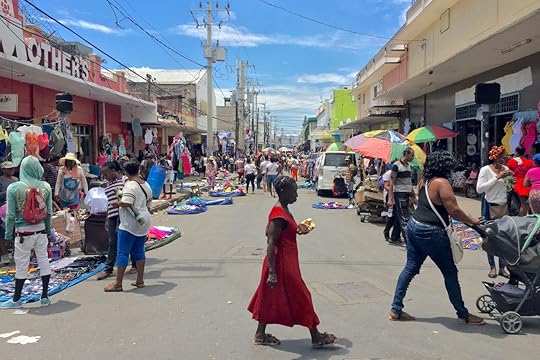
Jamaica is the largest island in the English-speaking Caribbean and has a population of nearly three million. Jamaica is also home to one of the highest peaks in the Caribbean, the 7,402-foot Blue Mountain Peak, and 120 rivers, more than 200 species of orchids, and one Usain Bolt — the fastest human on Earth.
If you’re the type of traveler who feels more secure holing up in an all-inclusive, then you’ll likely head to Jamaica’s picturesque, heavily touristed beach towns of Montego Bay, Negril, or Ocho Rios. But a trip to Kingston shows all that makes Jamaica a Caribbean hub for arts, culture, and cuisine. The city of around 1.3 million people is set against the lush backdrop of the Blue Mountains, and with its bevy of boutique lodgings, fun festivals, and dancehall clubs, Kingston beckons you to explore. One thing is for certain — you won’t be bored.
Here, you can find yourself in a friendly Jamaican patty battle one day, then sipping one of the world’s top-rated coffees at a lush estate the next. You can wake up in a luxurious boutique hotel then head for an afternoon hike in the stunning Blue Mountains. Regardless of your itinerary, you should indulge in the Jamaican staples of jerk chicken or ackee and saltfish (the national dish) in many fine restaurants throughout the city. And yes, you’ll likely experience what Jamaica is best known for: Rastas; reggae, which you’ll hear everywhere; and rum, the country’s national drink.
Some of the lore surrounding Jamaica is true. Cannabis is commonplace, and since 2015, possession of up to two ounces is no longer a criminal offense and locals and tourists can legally consume at designated dispensaries. The average annual average temperature hovers around a near-perfect 80 degrees Fahrenheit. The Jamaican government recognizes Reggae music as the country’s most valuable export.
These are all reasons to head to the island, and Kingston in particular. But there’s so much more to know.
For a deep dive into Jamaican culture, look no further than Kingston
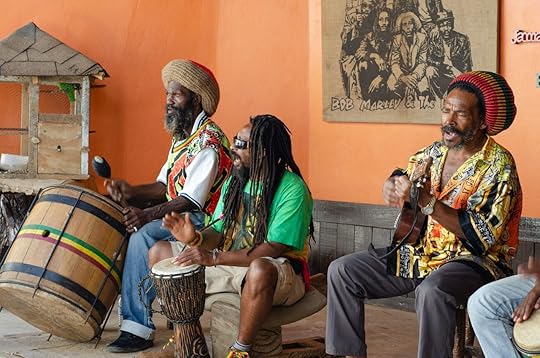
Photo: Lost Mountain Studio/Shutterstock
One of the first things you’ll notice as you touch down in Jamaica is that smiles abound, from street hawkers and taxi drivers to restaurant staff and office workers. When a popular song comes on at a restaurant or high-end bar, it’s not uncommon to see the staff take a few moments to laugh and dance with each other. Jamaicans know the importance of having fun.
Start your day by fueling up with a hearty Jamaican breakfast, which is what islanders consider to be the most important meal. A Kingston favorite is Triple T’z Eatery, a simple restaurant with funky décor that serves up breakfast staples such as mackerel rundown (a stew), callaloo (steamed leaf vegetables), ackee (a fruit with the consistency of scrambled eggs when cooked) and saltfish, corned pork, dumplings, and Johnny cakes (cornbread).
Another favorite is the award-winning Boone Hall Oasis in the Stony Hill neighborhood. Here you can enjoy a popular Sunday brunch of curried goat, sweet plantain, fresh salad, and soup next to the Wag Water river.
For something fast and delicious, try the ubiquitous Jamaican patty. It’s what sushi is to Japan and tacos are to Mexico. The delectable pastries are filled with beef, chicken, seafood, or vegetarian options, with the flaky shell tinted yellow with turmeric. A visit to Jamaica without trying a patty is a sin. On top of that, every citizen pledges their allegiance to a local fast-food brand for a patty — you’re either a Juici or Tastee boy or girl, or (much less so) a fan of Mothers. Occasional Instagram hashtag battles break out between supporters of these three main brands. Pick your side.
Follow in Bob Marley’s footsteps
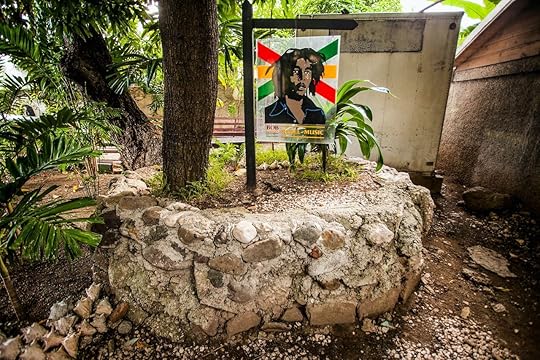
Photo: Photo Spirit/Shutterstock
With your belly full of patty, you’ll want to head Uptown to pay homage and learn about Bob Marley, the global face of Jamaica’s greatest export. Even if you’re not a fan of the legendary musician, head to Kingston’s most visited site, the Bob Marley Museum. The museum offers a fascinating look at the life of one of the most influential musicians in the history of popular music — a man who brought Rastafarianism, reggae, and Jamaican culture to the masses. For $25, you’ll get you a 75-minute guided tour of the two-story colonial-era house where the reggae star lived and recorded from 1975 until his death in 1981.
At each stop along the tour, your knowledgeable guide will prompt a group singalong to the relevant Marley song for that specific point of interest.
A vast array of gold and platinum records and Grammy awards adorn the walls in various rooms, with photographs, paintings, posters, and media clippings in others. Alongside these treasured mementos are Marley’s guitars; costumes worn by his backup singers, the I-Threes; and Marley’s famous working man’s denim shirt which he donned at concerts around the world.
At the rear of the house is the spot where gunmen snuck in one day in 1976 in an attempt to assassinate Marley, evidenced by bullet holes preserved in the walls.
In another, more pleasant area of the house is the wood-paneled recording studio of the former Tuff Gong Records, replete with original mixing boards where hits like, “No Woman, No Cry,” “Buffalo Soldier,” and “Could You Be Loved” were recorded.
Experience Jamaica’s national drinkPhoto: Rostasedlacek/Shutterstock
There’s always time for rum on Jamaica, especially with Bob Marley’s melodies floating around in your head and some legal medical marijuana from Kaya Herb House, Itopia, Epican, or another dispensary.
Feeling irie? Good. Quench your dry mouth and wet your palate with a dram or three of rum — Jamaica’s national drink. If you’re a fan of classic cocktails like the mojito, dark ‘n’ stormy, daiquiri, piña colada, mai tai, Cuba libré, and yes, even Long Island iced tea — or you simply want to stave off scurvy after a long bout at sea — then rum is your key ingredient.
While Barbados is widely considered the birthplace of rum, Jamaica has the honor of honing the rum-making process and putting the amber-hued spirit on the global map.
One of the best places to experience the craft of rum-making is at the 265-year-old Appleton Estate, a scenic two-and-a-half-hour drive west from Kingston into the heart of the island and its lush Nassau Valley. Once there, take in the view overlooking miles and miles of sugarcane fields that merge with the green hills far beyond. know that underneath your feet are the fertile soils and mineral-rich limestone waters that contribute the unique terroir of the distillery’s product.
Presiding over all this time-honored craftsmanship at the estate is the affable and passionate Joy Spence, the first woman in the world to be appointed Master Blender in the late 1990s. During tours of the estate, you’ll be able to taste wild fermented molasses, a key ingredient that gives Jamaican rum its distinct, full-bodied funk.
Other qualities define the island’s amber gold, as well: It’s made using all-natural GMO-free yeast, it’s aged in 40-gallon American oak barrels, and never in any step of the process are artificial flavors or sugar added to rum. Just fermented pure sugar cane, whose juice you’ll be able to try after volunteering yourself for a few laps turning the cane press.
Once you’ve taken a short and secretive (no photos or video allowed) walk through the sweltering steampunk world of the distillery, you’ll be thirsty. Lucky for you the tour concludes with a tasting led by professionally trained rum experts.
Eat, and then eat again
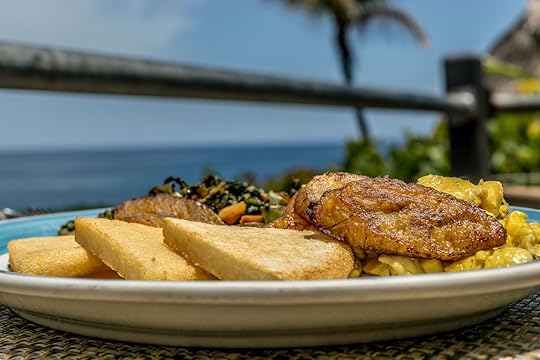
Photo: Debbie Ann Powell/Shutterstock
En route back to Kingston from Appleton Estate, there are two must-stops for food. The first is halfway up the long Spur Tree Hill road in Manchester. There, underneath a Banyan tree, you’ll spot a man named Wayne stirring a big boiling pot of his famous peanut soup on the side of the road. If, like myself, you’re allergic to peanuts, then treat whoever you’re traveling with. Word from my companions, even days after they tried the thick, aromatic soup was that it was the best thing they ate the entire trip.
Stop number two is at Fancy Fruits Health’staurant in the mountain town of Mandeville. One part fresh fruit and health food market, one part restaurant, Fancy Fruits is 100 percent ital (natural) Rasta food. Friendly, soft-spoken co-owner Yahya El will gladly take the time to tell you that in order to assimilate mind, body, and spirit, one needs to enjoy raw, fresh food prepared without fire, sugar, salt, or artificial preservatives.
For other traditional, hearty cuisine there’s a bevy of fine food choices once you’re back in the capital. Redbones Rooftop in the stylish boutique R Hotel is a cultural hub in Kingston. The open-air rooftop bar and restaurant has hosted live music, book launches, art exhibits, poetry slams, and theater in its numerous locations since 1996. The current location in the New Kingston neighborhood offers you panoramic views of the city all while savoring the recommended jerk chicken pasta and, of course, another round of dark ‘n’ stormies. If you’re there during the day, pop down to the gallery in the basement for the latest exhibits by celebrated artists.
For something more local, head downtown to Gloria’s Seafood City at the waterfront’s newly renovated Victoria Pier. The airy, nautical-themed restaurant is bright, loud, lively, and friendly. It’s the kind of fun Jamaican vibe where, in the middle of tucking into a giant seafood platter, curried lobster, or sweet onion blue crab, you might be asked to jump up and join a drink chugging contest.
Get out on the town
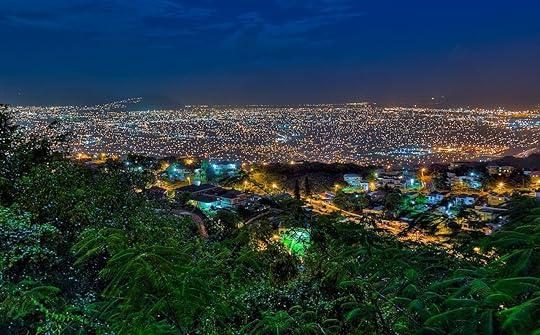
Photo: LBSimms Photography/Shutterstock
Let the rum party continue. The ultimate celebration of Jamaican rum is the lively Jamaica Rum Festival held in the leafy, palm-treed surroundings of Hope Gardens. You can take in seminars led by Joy Spence and other notable professionals in the rum industry, participate in cocktail making workshops, or learn to tweak your palate at a rum tasting. Then, once sufficiently tipsy, saddle up to some locals at the main stage and shake your booty to the likes of Kymani Marley, Capelton, Naomi Cowan, Spragga Benz, Freddie McGregor, and many more.
A trip to Kingston would not be complete without enjoying its famous nightlife. A good starting point is the Regency Bar & Lounge in the opulent, Old World-styled Terra Nova Hotel. The Regency is a chic, laid-back lounge with an outdoor patio where many in the capital gather before heading off for more raucous venues.
Fiction Nightclub calls itself Kingston’s premier nightclub, and for good reason. It’s one of the city’s hotspots for dancehall music, upscale parties, and a place to rub shoulders with international celebrities. Pro tip: Don’t go too early as parties start late in the city.
The Sunday evening highlight for many in the capital is the legendary Kingston Dub Club. Situated in the tony hills overlooking the city — right across from Rita Marley’s estate — the club is home to the Rockers Soundsystem and is dedicated to Rastafarian culture and music. Dub Club is operated out of the home of Karlyle “Gabre Selassie” Lee and has an outdoor dance floor, a store, and a bar and patio serving ital food with a stunning view of Kingston. You’ll find plenty of locals here mingling with international tourists, everyone enjoying the soulful music, and the spicy scent of the “herb” drifting through the air. Like Dub Club’s saying goes, “the only good system is a sound system.”
Don’t forget about the coffee
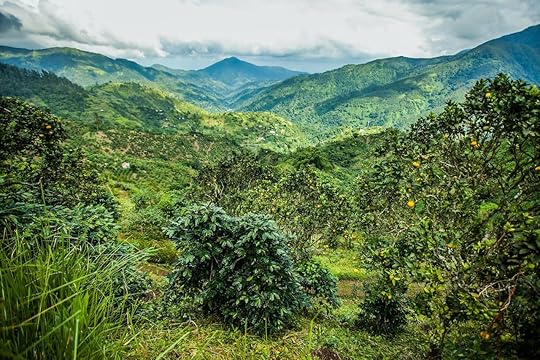
Photo: LBSimms Photography/Shutterstock
After a night out where you probably had a little too much fun, you’ll definitely need some world-renowned Blue Mountain coffee. A 40-minute drive into the lush hills 2,600 feet above Kingston is the 200-year-old Craighton Coffee Estate.
A casual hike through the plantation will bring you to a gazebo surrounded by coffee bushes and a magical view of the mountains and villages around.
What makes Blue Mountain coffee so sought after by discerning coffee drinkers around the world is the blend of perfect climate, soil fertility, hours and angles of sunlight, and plentiful mists and rainfall found in the region. Add a cheerful, knowledgeable, and music-loving master roaster and guide in Alton “Junior” Bedward, and you get an exotic, exciting, and sensuous brew with a unique and definitive flavor. A tasting on the patio of the estate house is included.
For those that enjoy nature and a good, hearty hike, the mountains that rise up to make Kingston’s back yard are not to be missed. The peak of Blue Mountain sits at 7,402 feet, the highest point in the Caribbean. So, while you may start your day wearing shorts, make sure you pack rain gear and warmer clothes for the mountains as temperatures can quickly drop.
The Blue Mountain peak hike is labeled as hard, but if you’re a brisk hiker, and the weather cooperates, the hike can be done in under six hours. To get there, pre-book a taxi (make sure it’s not a car with low clearance) or rent a 4×4 and then prepare for a one and a half-hour drive from Kingston along narrow, snaking roads into the spectacularly lush mountains. After the pavement ends the drive continues along steep, rutted dirt road through charming cliffside villages until you reach Whitfield Hall, where most of the hikes begin.
You can reach the peak without a guide, but I would not recommend it as it’s easy to take a wrong trail. Besides, you may end up being led by a charming and knowledgeable 70-year-old Rastaman with tall tales and plenty of energy to keep pace with you. Near the top you’ll pass through a lot of changing vegetation — the Elfin Wood being the most magical. Once at the peak, if you’re fortunate to have a cloudless day, you’ll be able to see the north and south side of the island stretching far below you to the sea. 

More like this: Everything to know about consuming cannabis in Jamaica
The post To see the real Jamaica, skip the resort and go to Kingston appeared first on Matador Network.
May 8, 2020
How to help save the bees in the US
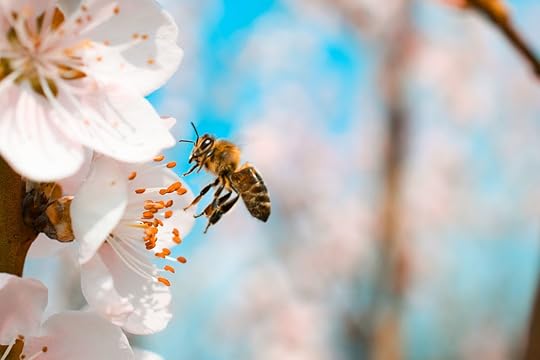
Bees are on the mind of the public these days. Scientists have concluded that climate change poses an increasing risk to bee populations worldwide, with a February study published in the journal Science directly linking rising temperatures to declining bumble bee populations on multiple continents. Common pest repellents like Orthene and Sevin, often sprayed on plants in commercial and residential settings, kill the pests that land on plants — and pollinating bees suffer the same fate. Even the almond milk on your grocery store shelf poses a threat.
The good news is that global awareness surrounding the plight of bees has never been higher. Local governments and entomologists are calling on citizens to step up, and it doesn’t even require leaving the house. Here’s the current state of the honeycomb union, and what you can do to help.
A new threat to bees in America: the Asian giant hornet
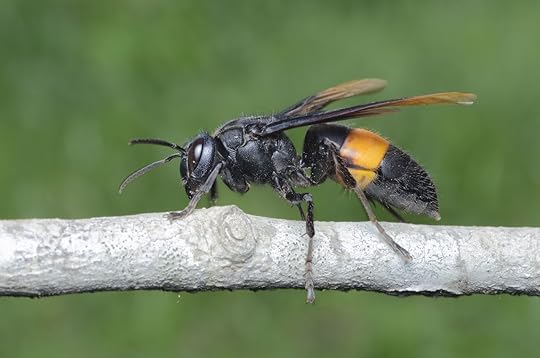
Photo: Ruzy Hartini/Shutterstock
In the Pacific Northwest, local entomologists are asking citizens for help locating and eradicating the latest threat to bee populations: the Asian giant hornet. CBS News reported that these predatory hornets, dubbed “murder hornets,” could swarm and kill millions of honeybees in the Pacific Northwest this summer and fall. With sharp, blade-like mandibles, the hornets attack hives and kill the inhabitants, eating the larvae and pupae and often leaving dead bee carcasses strewn about on the ground below. The result is a major threat to local honeybee populations in the northwest and the life cycles of the plants and animals that depend on them.
The hornet can reach two inches in length and has a massive — in relation to its size — wingspan and head with teardrop eyes that, according to a report in The New York Times, is distinctive of its species. This makes it relatively easy to spot. The “murder hornet” arrived in British Columbia in the fall of 2019 and was first discovered in the United States in December. It wasn’t until recently when the hornet became a major threat to honeybees, however, as the queen’s hibernation period ends in April, and workers become active throughout spring, summer, and fall. Humans are also threatened by the hornets, though not lethally. Beekeeper and entomologist Conrad Bérubé told The New York Times that he was stung at least seven times by the hornet, noting that the stings were “like having red-hot thumbtacks being driven into my flesh.”
Entomologists in the Pacific Northwest are working to eradicate the population of Asian giant hornets before the species establishes a prominent presence, and if you live in the area, they need your help. The best way to take action is to report sightings to the Washington State Department of Agriculture Pest Program. Call 1-800-443-6684 or shoot an email to pestprogram@agr.wa.gov.
In Britain, bees face a viral disease that kills within a week
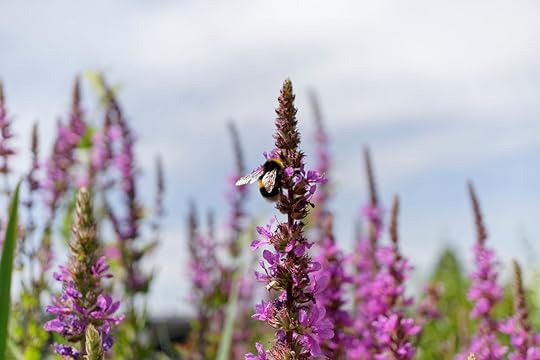
Photo: CarlsPix/Shutterstock
On the other side of the Atlantic, bees face a different kind of threat. Chronic bee paralysis virus, or CBPV, is a viral disease that, once inside a colony, spreads rapidly. According to a new study published this week, the deaths appear to be increasing exponentially. Though it has been around for centuries, the modern CBPV was first recorded as a major threat to bees in the UK in 2007, according to The Guardian, and has become more of a threat to bees in the years following. The disease is particularly worrisome to beekeepers who manage hundreds or even thousands of colonies. Once a few are infected, it can be tough to prevent spread to the others. Much like the current predicament among humans, social distancing is thought to help prevent the spread of the viral disease. In the UK, this is much easier in the summer than in winter, when managed bees are typically kept within their hive.
Three ways you can help protect the bees
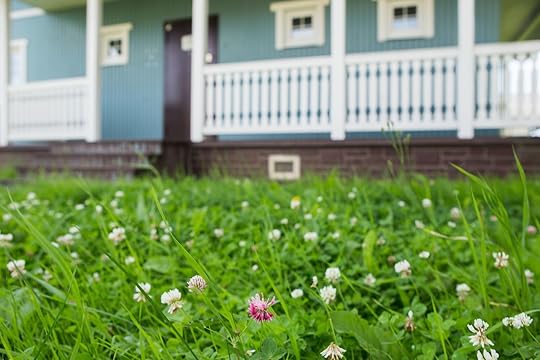
Photo: Scharfsinn/Shutterstock
1. Plant clover or, better yet, an entire garden
No matter where you live, one of the best things you can do to support bees is to plant a garden, whether in your yard or in a community garden plot. Include vegetables that grow well in your region, of course, but also include common flowers that bees pollinate, like daisies, snapdragons, and marigolds. Bees will be uber-attracted to your garden and, as a bonus, your plot will be extra colorful.
Another action point, for those with a yard, is to plant Dutch White Clover and let it grow naturally in the grass. Bees rely on wild grasses and clover, both in tight supply in the nation’s cities. You can find Dutch White at local nurseries, greenhouses, or garden supply shops around the country. Enough clover to populate the average suburban lawn shouldn’t run you more than $15. Planting wild grasses native to your area is also helpful, serving as a food source for bees. Last year, Minnesota even announced plans to pay homeowners to ditch lawns in favor of wild grasses and wildflowers in an effort to save the bees — an initiative we hope more states will follow.
2. Support nonprofits and government agencies working on the ground
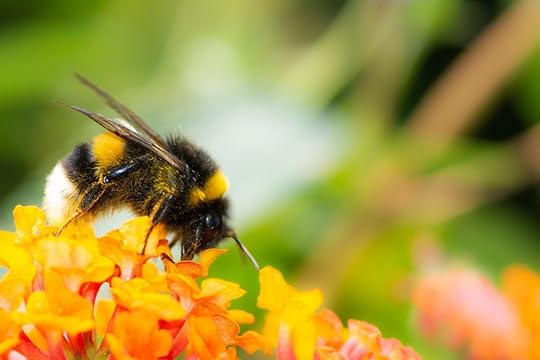
Photo: manfredxy/Shutterstock
If you’re in a position to make a financial donation to the bee conservation effort at large, nonprofit groups including The Honeybee Conservancy and Planet Bee work to protect bee populations and habitats through education, outreach, and activism. In the UK, the group Friends of the Earth has put together a “pollinator action plan” that governments can use to develop bee-friendly policies. Many local governments including those in Cornwall and Devon have already taken action — and the group is asking citizens throughout the country to lobby their officials to do the same.
3. Shop smart, wherever you are
Your daily spending habits can have an impact on bees, whether or not you realize it. Non-organic vegetables sprayed with toxic pesticides and other chemicals can be devastating to bee environments. As such, buy organic produce whenever possible.
Avoid buying or using lawn and garden products that are harmful to bees. Namely, anything that contains Imidacloprid, Acetamiprid, Clothianidin, Dinotefuran, or Thiamethoxam. This means that many — if not most — common anti-pest chemicals are at the root of the problem, which only serves to amplify the need for organic growing practices, even in the home garden. 

More like this: 5 ways the environment has improved since the first Earth Day
The post Between monster hornets and viral disease, bees are having a really bad week. Here’s how to help. appeared first on Matador Network.
Climate change effect on coffee

Coffee is the second most-consumed beverage in the United States. It’s also one of the agricultural products that will feel the greatest impact from climate change in the upcoming decades.
In a 2019 study from researchers in the United Kingdom, 75 of the 124 coffee species in the world (60 percent) are classified as critically endangered, endangered, or vulnerable according to standards set by the International Union for Conservation of Nature. The major deciding factors as to whether they survive are climate change and the mitigation of diseases, which are exacerbated by climate change.
“They say, ‘You’ll find no climate skeptics in the wine industry,’ and the same well and truly goes for coffee,” says Tom Baker, the co-founder of the cold brew coffee liqueur Mr. Black.
The reason why is obvious: Coffee and coffee-adjacent industries don’t have to wait to see what climate change can do to their industry. Falling supply from some of the most impacted regions in East Africa, especially Kenya and Ethiopia, means extreme price hikes for beloved regional beans. What’s to come is likely going to be worse, as a 2014 study published in the journal Springer notes, because coffee plantations typically work in 30-year lifespans.
The 2014 study found that around 50 percent of the global area suitable for coffee will disappear by 2050 even if governments enact strict emissions standards. The Southern Hemisphere and low-altitude regions will be the most affected, led by 72 percent of Madagascar species labeled as threatened and 71 percent of species in Tanzania. However, no coffee-growing region will be spared.
“Specialty coffee is grown in a wide range of microclimates where the particular coffee variety is suited to a given combination of soil, altitude, temperatures, rainfall, and so on,” says Asser Christensen, a licensed coffee grader and the founder of the specialty coffee website The Coffee Chronicler. “These unique conditions mean that climate change will affect each area differently. Increasing temperatures will likely lead to more coffee being grown at even higher elevations.”
While Christensen adds that more dense seeds, which make a preferred cup, are produced in higher elevations, it’s not an equal trade-off for what will be lost. Areas where the climate becomes more suitable for coffee are forested, coffee farms would remove the habitat of other species, and the infrastructure for coffee growing won’t be there to begin with.
“Overall it will have a negative impact since coffee farmers will have to relocate and plant coffee in new areas,” Christensen says. “The more precarious coffee farming is, the less likely it is to attract a new generation of farmers.”
Why the threat to wild species matters
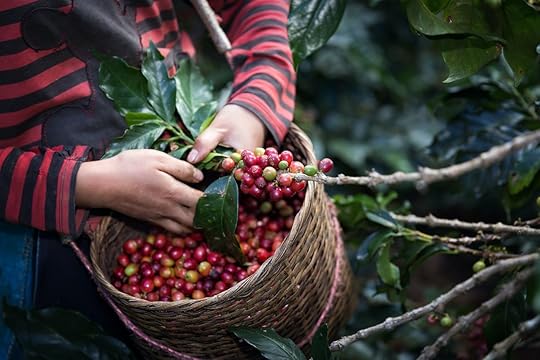
Photo: KAMONRAT/Shutterstock
Of the 124 coffee species, we drink just two. There’s the lighter and fruitier arabica, which makes up 60 percent of commercial coffee, and the higher-caffeine , which makes up the remaining 40 percent. When people talk about how climate change will impact coffee, the conversation generally revolves around how it will impact the regions that commercially grow arabica and robusta. The impact on these farms is already happening and will continue to get worse, but most of the 120-plus wild species are in an arguably more dire situation. What happens to them could exacerbate problems in the long term.
The 2019 study from the UK researchers found that, in addition to the 60 percent of species threatened with extinction, 45 percent of coffee species aren’t preserved in a seed bank, and 28 percent don’t live in an area that’s environmentally protected. Some of these threatened species could help the coffee industry as a whole through the creation of disease-resistant hybrids.
“There’s a risk that large coffee regions could be wiped out rapidly,” Christensen says. “Not due to climate change itself but because of byproducts such as new pests and diseases. This has happened previously in history. Sri Lanka was one of the biggest coffee producers in the world until coffee leaf rust decimated the production entirely in just two decades. The same thing could happen today, and we already see signs that a new fungal disease will pose a bigger threat as changes in temperature and humidity start to occur.”
Hybrids have worked for coffee before. Robusta, which is resistant to the devastating coffee leaf rust disease, was cross-bred with arabica cultivars to create more resistant plants. Coffee regions will face a diverse set of problems from an abundance of water, to not enough water, to heat and wild temperature swings. New diseases will pop up that take advantage of post-climate-change conditions. Losing wild species could mean losing the solution to the coffee shortage problem.
The benefits of flexibility and community support
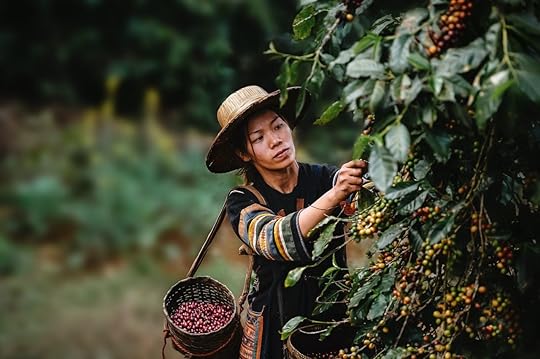
Photo: jakkapan/Shutterstock
Flexibility can make change easier through actions like planting tall trees to provide shade in hotter regions and adding irrigation. The coffee farms of Mount Gorongosa in Mozambique is one example of region-specific agricultural techniques that combat climate change.
“We are a bit unique in that we are working in areas and with farmers that haven’t grown coffee before,” says Eric Wilburn, the director of Gorongosa Coffee, via email. “And thus have a bit more ability to implement more resilient planting and processing techniques to ensure a broad spectrum of flavor profiles that retains its depth in the face of climatic changes.”
Gorongosa’s farms are rainfed and grown by other trees planted to restore deforested areas. The rainforest means “there is potential for the area to be resilient to the drought effects of climate change as rainforests generate local rainfall [through humidity and formation of rain clouds],” Wilburn adds.
While the region has yet to see acute changes, the dry season has been longer than normal, and the average temperature has increased. The efforts of coffee companies can make a difference, though. Gorongosa Coffee is owned by the Gorongosa Trust, which funds conservation and community initiatives in Gorongosa National Park. Profits support education for girls, as well as wildlife and rainforest conservation and restoration.
The effects of climate change won’t hit equally. Socially conscious companies can help some coffee regions survive, but more importantly, they can help the people who depend on the coffee regions for work and income survive, as areas with lower socioeconomic conditions are at a far greater risk than wealthier areas.
Supporting the people who produce coffee, and those who protect the regions where coffee is grown, is a major way that the industry has stepped up to do its part. Some companies are opting for environmentally friendly packaging, like Wandering Bear, which also sources certified organic to support “farms and farmers who employ best practices for sustainable agriculture,” says co-founder Ben Gordon.
“Like any brand with organic products, we pay a premium for organic ingredients,” Gordon says. “So we’re quite literally communicating that we place a higher value on organically grown goods, and we’re using our commercial influence to advance those practices.”
Buying coffee from transparent, direct-trade roasters like Nguyen Coffee Supply is something that eco-conscious consumers can do. Responsible buying puts money in the hands of farmers who are working to best implement climate-change-resistant practices.
Climate change is going to drastically change coffee as we know it. It’s up to coffee companies and consumers to decide how much. 

More like this:
The post How climate change will drastically change coffee as we know it appeared first on Matador Network.
Robodog in Singapore

You might think you’ve stepped into an episode of Black Mirror, but it’s actually just pandemic-era Singapore. A robot dog has been deployed by Singapore authorities to help ensure park-goers are abiding by social distancing measures. The yellow and black remote-controlled robot dog is named SPOT, and on Friday, it was used for the first time in a central park in Singapore.
As it patrolled the park, the dog said in a female voice, “Let’s keep Singapore healthy. For your own safety and those around you, please stand at least one meter apart. Thank you.”
Singapore’s lockdown, in place until June 1, only allows residents to leave their homes for essential trips and outdoor exercise. SPOT’s purpose is to encourage social distancing during those periods of exercise.
According to the government technology and cybersecurity agencies behind SPOT, the robot is safer than using human personnel to police social distancing regulations. “This lowers the risk of exposure to the virus,” authorities said. “Unlike wheeled robots, SPOT works well across different terrains and can navigate obstacles effectively, making it ideal for operation in public parks and gardens.”
In addition to politely reminding people to keep apart, SPOT is also equipped with cameras and analytics tools to estimate the number of people in the park. The camera does, however, track individuals, or record personal data.
SPOT has also been used in the healthcare industry, allowing medical professionals to triage patients remotely, via iPad screen, to reduce their risk of infection.
And SPOT isn’t the only robot policing Singapore’s streets. Another robot, shaped like a small car, has also been deployed at a nearby reservoir, warning visitors against loitering and congregating in large numbers. 

More like this: How to go backpacking with a dog, according to an expert
The post A robodog is patrolling a park in Singapore to enforce social distancing appeared first on Matador Network.
Cats in quarantine film festival
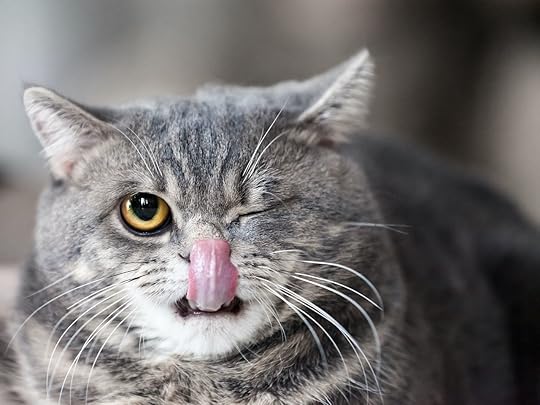
I have spent the majority of my time in lockdown cooing, petting, squeezing, and generally gushing over the almost painful cuteness of my three cats, much to their irritation. I mean, what else am I supposed to do during lockdown? Which is why I am thoroughly on board with a film festival dedicated to home movies of cats in quarantining, the proceeds from which will go to independent theaters that have shuttered as a result of the COVID-19 pandemic.
This oddball film festival is the brainchild of Row House Cinema in Pittsburgh, Pennsylvania, which is very smartly capitalizing on the fact that all people want to do right now is watch cats chase a shadow around an empty room. The Quarantine Cat Festival invites anyone sheltering at home with a feline companion to submit a home video of their cat in action — or, as is more likely, not in action but instead sleeping on your pillow in a shape best described as “cinnamon bun.” Anyone interested in submitting their own video can find instructions on how to film their pets and how long the videos should be on the Row House website.
The short films will be compiled into a 70-minute movie that will be screened on June 19 through independent cinemas around the country that Row House partnered with — on their digital platforms, of course. Paying for a (digital) ticket will support theaters that have been forced to close due to the pandemic.
Row House owner Brian Mendelssohn told USA Today that it’s “fun to watch cats do cool things,” and he is absolutely right, if those cool things include jumping onto bookshelves, tipping over water glasses, and trying to eat dust bunnies. His cats Oliver and Isabella, who tend to get into some hilarious shenanigans, inspired the idea for the film fest. Anyone with cats can attest to the fact that, in between naps cats, they tend to be mischievous little beasts.
According to Smithsonian Magazine, cash prizes will also be given out to the “cutest, funniest, bravest, and most loving cats,” as well as to the overall “Best in Show” film. Sounds like a cute idea, but as far I’m concerned, every cat is the “cutest, funniest, bravest and most loving” cat. 

More like this: You can finally take a virtual tour of the rarely photographed Studio Ghibli Museum in Japan
The post This film festival will show only home videos of cats in quarantine appeared first on Matador Network.
Winner of NASA’s 2020 photo contest

If the view from your windows doesn’t do it for you any longer, this vibrant aerial picture of the Bahamas should transport you to a dreamier place.

Photo: NASA//Serge Andrefouet
“Ocean Sand, Bahamas” is the title of the winning image for NASA Earth Observatory’s 2020 bracket-style photo competition called . The competition pitted the best-submitted photographs of the Earth against each other in a brack format, and the public voted on which photos advanced.
“Ocean Sand, Bahamas,” taken in 2001 by Serge Andrefouet through the Enhanced Thematic Mapper Plus instrument aboard the Landsat 7 satellite, is a beautiful artistic false-color rendering of patterns in the sands and seaweed in the Bahamas.
Over 56,000 people voted in the contest, whose entries were taken from NASA Earth Observatory’s Image of the Day. “Ocean Sand, Bahamas” won 66.2 percent of the votes in the final round. It beat out a photograph taken by astronauts aboard the International Space Station of the erupting Raikoke Volcano, as well as a view of the Earth from space, among others. 

More like this: Photographer captures extraordinary shots of a cross fox in Canada
The post Otherworldly Bahamas image wins NASA’s contest for best Earth photo appeared first on Matador Network.
People order airline snacks online

At their best, airplane snacks were a somewhat lackluster way to take the edge off your inflight hunger. At their worst, they were flavorless morsels that only made your mouth drier and your stomach growl even more. Now, as we find ourselves grounded, airplane snacks are coated with a nostalgic glow. A relic of the not-so-distant good old days, airplane snacks are in high demand now as a reminder of what once was, and what might be again.
With planes virtually empty these days, millions of perfectly good airplane snacks are going to waste. That’s why Imperfect Foods, an online grocery delivery company that uses excess inventory to eliminate food waste, is now buying unused snacks from airlines (and even hotels) and selling them to consumers. For example, the company is buying up JetBlue’s cheese and snack trays and selling them for $2.99.
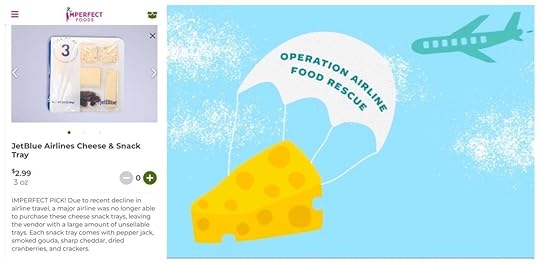
Photo: Imperfect Foods + Imperfect Foods/Facebook
According to Philip Behn, Imperfect Foods Chief Executive, the company has sold 40,000 cheese and snack trays.
And those who need it the most are getting the airline snacks for free. JetBlue has been donating much of its unused stash to food banks and hospitals, including EatUp snack Boxes, EatUp Cafe fresh food items, beer, wine, and even liquor. Similarly, Southwest has donated over $400,000 in snacks and other in-flight items to nonprofits, Delta has donated 200,000 pounds of food around the world in recent weeks (including their famous Biscoff shortbread cookies), and United donated 173,000 pounds of food to food banks and charities.
As for United’s popular stroopwafels, you were always able to buy them at Stroopwafels.com. Now, you can get them 15 percent off by using the code: FLYAWAY15. 

More like this: The best (and worst) airline food in the world, according to a pro airline food reviewer
The post Travel withdrawal is so real that people are ordering airline snacks online appeared first on Matador Network.
Colombian coffee shortage
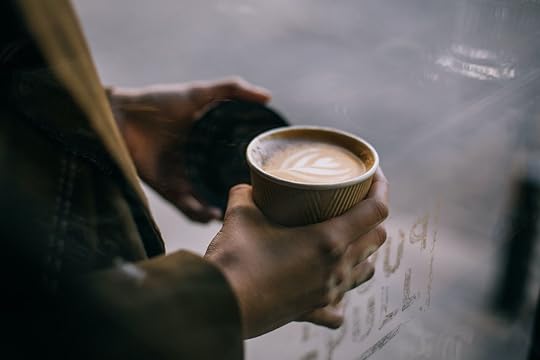
For centuries, coffee has been harvested by hand in the hills of Antioquia, Colombia. Yet due to the COVID-19 pandemic, laborers may be prevented from working the harvest. It’s another blow to the Colombian coffee industry, which is the third largest in the world.
According to an in-depth report from Daily Coffee News, the annual harvest of Colombian coffee beans has already been delayed due to the onslaught of the pandemic, as coffee farmers and their employees adhere to shelter-in-place orders. Climate change adds another complication: Colombia’s rainy season didn’t come until late April this year, which pushed harvest back even further — a shift that could cause small farms to lose up to 15 percent of the harvest, according to Daily Coffee News. The one-two punch of a smaller workforce and weather means lost portions of the Colombian coffee harvest for farmers who are still recovering from last year’s price drops.
The current situation led Roberto Vélez of the Colombian Coffee Growers Federation to tell Financial Times that “there is a shortage of washed arabica coffee.” Stockpiles from previous years will help satisfy demand, but this is happening in the same year that stocks of arabica beans were already low.
The workforce safety issues on coffee farms is a sadly familiar story in the COVID-19 era. Seasonal workers typically live together in communal houses, which are rightly considered a health hazard right now, and public transportation is limited, making it difficult for workers to find a way to get to their old jobs. Some farms are adapting by recruiting out of work retail and hospitality workers from neighboring towns to take over the harvest, and increasing wages in order to tempt people to join the effort. The result of a decreased workforce means perfectly viable coffee cherries will be left to rot on the vine because there simply aren’t enough people to pick them. Not to mention the logistical challenges of transporting the picked coffee when the shipping industry is limited, as well.
One upshot is that the prices for Colombian coffee have reached an all-time high, which might not make sense given that restaurants and bars where coffee is served are closed, but can be in part explained by the fact that roasters and suppliers are stockpiling coffee for the inevitable reopening of the world’s restaurants. Some of that price increase will go to higher wages, and the prices are a rare bright spot. If demand for coffee remains high once restrictions on restaurants are lifted, Colombian coffee farmers might be able to weather this storm after all. 

More like this:
The post The world may soon face a Colombian coffee shortage appeared first on Matador Network.
German brewer gives away free beer
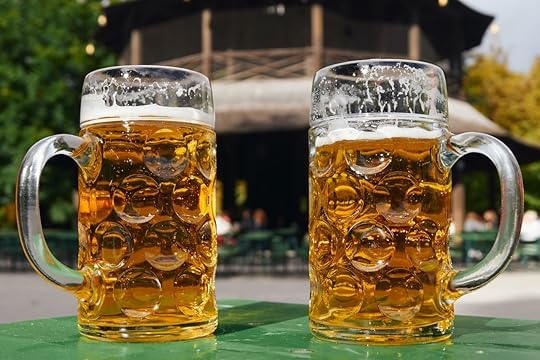
The Willinger brewery in the German village of Hesse recently found itself in a bind: Unable to complete its usual beer deliveries to hotels and restaurants, the brewery quickly ran out of space to brew fresh beer. But now that the country is reopening, the brewery had to make room. So instead of throwing it away, the brewery fulfilled the dream of every German villager: It gave away the beer for free.
According to Al Jazeera, Willinger decided to offload its extra supply of light and dark beer to the public before German businesses are officially allowed to reopen to the public. In total, the villagers of Hesse were treated to 2,600 liters of beer, which is the equivalent to more than 7,300 12-ounce beers, or around 5,500 pints.
The owner of the brewery, Franz Mast, said that the generous move was also a practical one: He simply needed room in the tanks for fresh beer that he’d soon be supplying to bars and restaurants in Hesse. Reopening is good news for German brewers across the country. Many faced a serious drop in sales that, according to the Deutsche Brauer Bund beer association, could have resulted in a total collapse of the beer brewing industry.
Initially, he only planned to give away around 540 liters of beer, but the villagers snatched all of it up immediately, so he offered the rest of his supply to the thirsty public. They must have been eager for some public displays of beer-related reflection. After all, the cancellation of Oktoberfest was a blow to the national psyche.
The villagers were appropriately appreciative, apparently standing in line outside the brewery in masks with buckets and boxes waiting to fill up on free beer. Mast also told Al Jazeera that he wanted to thank people for supporting the brewery and hoped that once he’s able to reopen, the folks who benefited from his free beer will recommend the brewery to friends. 

More like this: Europe’s Baltic states to create a three-way ‘travel bubble’ as of May 15
The post Villagers in Germany treated to 2,600 liters of free beer appeared first on Matador Network.
Denmark organizes drive-in concert

Everyone knows about the old-fashioned charms of drive-in movie theaters, but drive-in concerts might raise a few eyebrows. Well, in the era of social distancing, drive-in concerts are better than no concerts. Since large gatherings probably won’t be on the docket for quite some time, Denmark got creative and recently held a drive-in concert, where the audience could enjoy live music from the comfort of their cars.
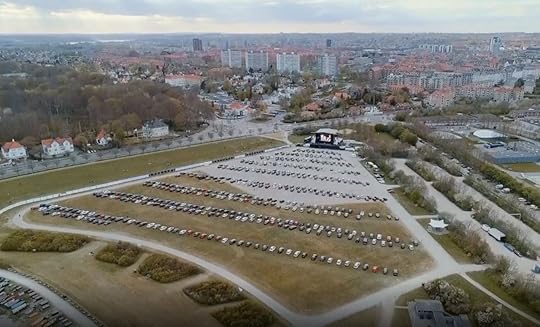
Photo: madslanger/Instagram
A stage was constructed on the outskirts of the city of Aarhus, where singer-songwriter Mads Langer performed to a live audience. Attendees could tune into the live show by listening to the designated FM radio station.
Langer simply appreciated the opportunity to perform in front of a live audience. On Instagram, he wrote, “That feeling when you reunite with your audience although they were sitting safely in their cars.”
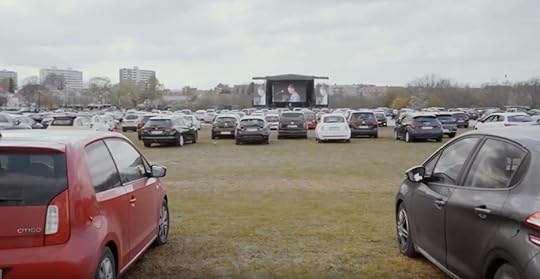
Photo: madslanger/Instagram
According to the organizers, the event was a success. A police officer told Danish newspaper Jyllands-Posten, “There are only positive messages from our people on the spot. It has been controlled. People have behaved as they should, and all the cars were out of place within half an hour.”
Germany has also hopped on the drive-in entertainment bandwagon. The country’s first drive-in rave took place on April 30 in a club parking lot in Schüttorf. The show was headlined by DJ Devin Wild and attracted 500 people who all remained in their vehicles. 

More like this: This calendar shows the live music streaming shows you can watch at home
The post Denmark hosted its first drive-in concert, and it was much better than no concert at all appeared first on Matador Network.
Matador Network's Blog
- Matador Network's profile
- 6 followers



